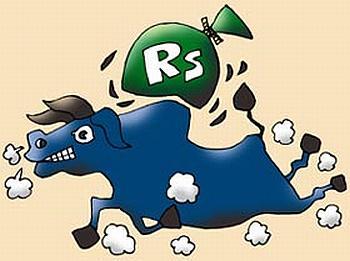Photographs: Rediff Archives Ramalingam K
Rahul works with a mutual fund house. They have recently come out with an NFO (new fund offer). The day on which his fund house announced its maiden NAV (net asset value) he received lot of calls from investors asking why the NAV is below par (Rs 10 at which the public got the units). They thought something was wrong.
Rahul began his clarification: That though both an equity fund and a stock extend market-related returns, there are some key differences between the two. If you have similar misconceptions about equity funds and stocks, this article will demystify those misconceptions.
New fund offerings
A new fund offer is not likely to generate amazing returns as can be the case with an initial public offering from a company.
This is because the NAV reflects the market value of the stocks held by the fund on any day. Because a fund holds several stocks in its portfolio, the NAV can only reflect the combined returns on the portfolio between the NFO date and the date of first NAV.
The first NAV declared by a fund can, at times, be lower than the par value of investment. A lower NAV does not mean a cheaper fund: Just because a new fund is issued at Rs 10, it does not mean it has a chance of giving better returns than an existing fund that has a higher NAV.
Whether the scheme in which you are planning to invest has an NAV of Rs 15 or Rs150 does not matter at all.
There is a difference between the price of a listed security and the NAV of a mutual fund scheme. Listed security has a price, determined by the demand and supply of the security. Mutual fund unit's NAV, though, has a value determined mathematically, by the prices of the securities in the portfolio.
If the portfolio appreciates by 10 per cent Rs 15 NAV will become RS 16.5 and Rs 150 will become Rs 165. So in whatever the NAV you invest your investment will fetch you 10 per cent return.
So instead of concentrating on LOW NAV and more number of units, it is worthwhile to consider other factors (performance track record, fund management, volatility) that determine the portfolio return.
A fund with higher NAV may give higher returns than a lower NAV fund, if its stocks did better in the markets.
Click NEXT for more
The author is Ramalingam K, an MBA (Finance) and Certified Financial Planner. He is the Founder and Director of Holistic Investment Planners (www.holisticinvestment.in) a firm that offers Financial Planning and Wealth Management. He can be reached at ramalingam@holisticinvestment.in.
Five must-knows before investing in mutual funds
Equity funds vs stocks

Click NEXT for more
Five must-knows before investing in mutual funds
Dividends are not extra returns
Immediately, after the dividend payment the NAV of a fund will fall to the extent of the dividend payment. Let us illustrate.
Fund's cum dividend NAV is Rs 25. Proposed dividend is 50 per cent. You are investing Rs 1 lakh and you will not get Rs 50,000 as dividend. It is only Rs 20,000 (50 per cent on the face value Rs 10 is Rs 5 per unit) as the unit price is Rs 25 you will get 4,000 units. Rs 5 dividend * 4000 units = Rs 20,000.
And this dividend is not an additional gain or income. After payment of dividend the NAV of the scheme will fall to the extent of the payment and distribution taxes (if applicable). Now your NAV will become Rs 20 and your investment value will be Rs 80,000 (4000 units * Rs 20 NAV).
In a nutshell:
Investment amount = Rs 1,00,000
Dividend amount = Rs 20,000
Present Value = Rs 80,000
It is nothing but investing Rs 80,000 after dividend distribution at NAV Rs 20.
So investing in a scheme because it is declaring dividend in the near future is meaningless.
Usually a company with a liberal dividend policy may enjoy greater investor interest in the stock market. The same is not applicable to an equity-oriented mutual fund.
Click NEXT for more
Five must-knows before investing in mutual funds
Investing more number of funds is not actual diversification
Actually, it may reduce your return.
Owning several mutual funds doesn't necessarily broaden your holdings. It will be a mistake to buy the same securities over and over again in different funds with different names. You tend to believe they're diversified. But it is not real diversification.
There are only very few funds which are performing consistently. Instead of investing in few funds, if someone chooses to invest in more number of funds (because s/he intends to diversify) he may be forced to choose some average performing schemes also. As a result his returns will be diluted. The step taken by the investor to diversify her/his investment is not leading to diversification but to dilution of return.
Thus ideally your portfolio should not have more than four-five funds.
Click NEXT for more
Five must-knows before investing in mutual funds
No tax for churning
When we buy shares and sell them within a year we are accountable for short-term capital gain tax at the rate of 15 per cent.
But mutual funds provide the benefit of churning of stocks with no tax implications. Because a fund that churns its portfolio within a year is exempt from tax as it only redistributes these profits to investors.





Comment
article